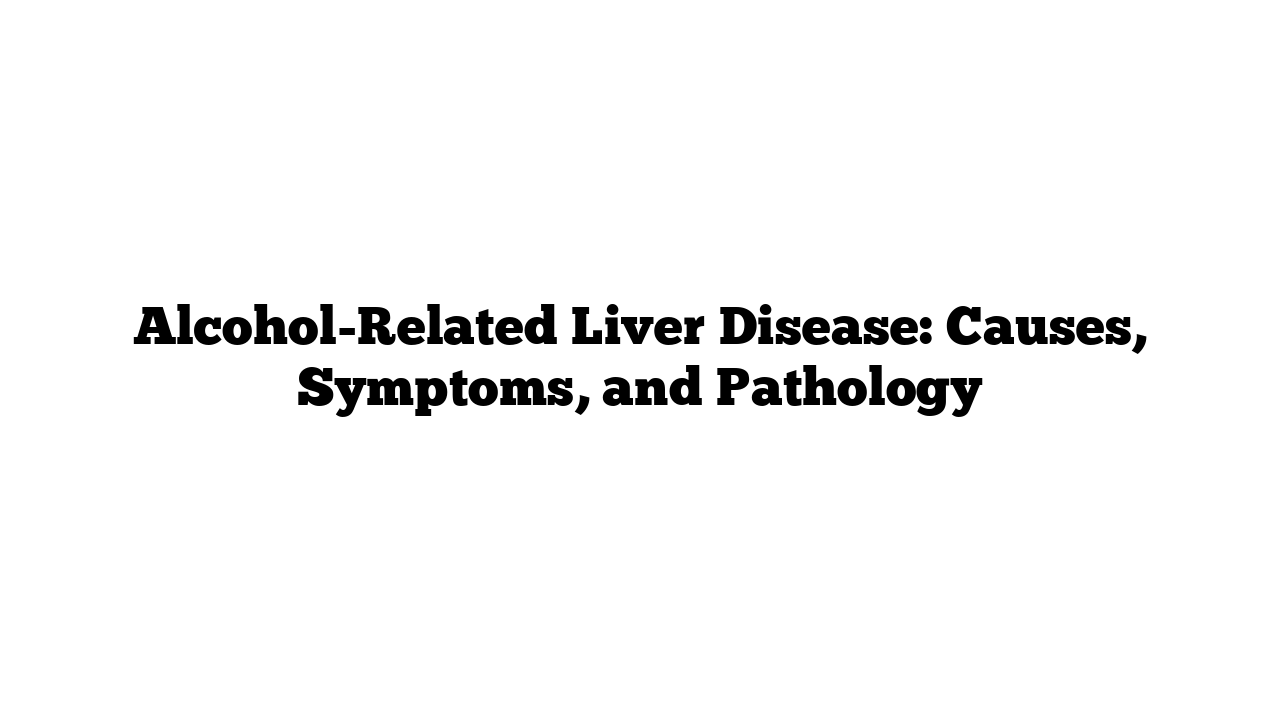When we think of the liver, we often associate it with detoxification—and for good reason. The liver plays a critical role in breaking down substances, including alcohol. While moderate alcohol consumption is generally safe, excessive drinking can have devastating effects on the liver, leading to alcohol-related liver disease (ARLD), the leading cause of liver disease in Western nations, including the USA.
This article explains the causes, symptoms, and progression of this condition, offering insights into how alcohol affects the liver at the cellular level.
How Alcohol Affects the Liver
When alcohol enters the body, it begins its journey in the stomach. From there, most of it is sent to the liver, which acts as the body’s detoxification hub. The liver processes alcohol through three main pathways:
- Alcohol Dehydrogenase (ADH) – Found in the cell’s cytosol.
- Catalase – Located in peroxisomes, small organelles involved in breaking down harmful molecules.
- Cytochrome P450 2E1 (CYP2E1) – Found in the liver’s microsomes.
All these pathways convert alcohol into acetaldehyde, a toxic compound that must be further broken down into harmless acetic acid.
Fatty Liver Disease: The First Stage
Excessive alcohol consumption overwhelms the liver, leading to imbalances in compounds like NAD+ and NADH. When NAD+ levels drop and NADH levels rise, two critical changes occur:
- Increased fat production: Elevated NADH signals the liver to produce more fatty acids.
- Decreased fat breakdown: Lower NAD+ levels slow the oxidation of fatty acids.
This dual effect leads to fat accumulation in the liver, known as fatty liver disease or steatosis. At this stage:
- The liver becomes enlarged, greasy, and yellowish due to fat deposits.
- Histology reveals fat-filled cells, making the liver appear dotted with lipid droplets.
Although typically asymptomatic, patients may experience liver tenderness. The good news is that fatty liver disease is reversible if alcohol consumption stops.
Alcoholic Hepatitis: Inflammation and Damage
Prolonged alcohol use introduces more complications. When the liver metabolizes ethanol, it produces reactive oxygen species (ROS), such as hydrogen peroxide and superoxide anion. These ROS are highly reactive and damage cellular components, including proteins and DNA.
At the same time, acetaldehyde interacts with liver molecules, forming compounds known as acetaldehyde adducts. These adducts:
- Interfere with normal cellular functions.
- Trigger an immune response, attracting neutrophils to the liver to clean up the damage.
This inflammation leads to alcoholic hepatitis, characterized by:
- Liver swelling (hepatomegaly): The liver becomes painful due to immune cell infiltration.
- Mallory bodies: Bundles of damaged proteins visible in liver cells under a microscope.
- Perivenular fibrosis: Scar tissue forms around central veins in the liver.
Increased liver damage results in the release of liver enzymes into the bloodstream, including:
- Alanine aminotransferase (ALT) and aspartate aminotransferase (AST) – With AST typically elevated more than ALT in alcoholic hepatitis.
- Serum alkaline phosphatase (ALP) and gamma-glutamyltransferase (GGT) – Both often elevated.
Other possible symptoms include:
- Thrombocytopenia (low platelet count).
- Hypoglycemia (low blood sugar).
Treatment requires stopping alcohol consumption completely. In severe cases, corticosteroids may help reduce immune-mediated damage.
Cirrhosis and Liver Failure: The Final Stage
If alcoholic liver disease progresses unchecked, it can result in cirrhosis, where healthy liver tissue is replaced by scar tissue. This scarring impairs liver function, potentially leading to:
- Portal hypertension: Increased blood pressure in the liver’s portal vein.
- Liver failure: A life-threatening condition requiring urgent intervention.
At this stage, symptoms may include jaundice, fluid buildup in the abdomen, and confusion due to toxin buildup in the blood. Advanced cirrhosis can be fatal without treatment, and liver transplantation may be the only option.
Key Takeaways for Managing Alcohol-Related Liver Disease
- Prevention is Key: The best way to avoid ARLD is by moderating alcohol consumption or abstaining altogether.
- Early Detection: Fatty liver disease is reversible, but it requires recognizing symptoms and seeking help early.
- Stop Alcohol Consumption: In all stages of ARLD, stopping alcohol is essential for halting further liver damage.
- Medical Intervention: Corticosteroids and supportive care may help manage severe inflammation, while advanced cases may require a liver transplant.
Visit medicaltimes.io for trusted resources on liver health and disease management.
Reference Websites
- American Liver Foundation
- National Institute on Alcohol Abuse and Alcoholism
- Mayo Clinic – Liver Disease
Top 10 FAQs about Alcohol-Related Liver Disease
- What is alcohol-related liver disease?
ARLD includes liver damage caused by excessive alcohol consumption, ranging from fatty liver to cirrhosis. - Is alcohol-related liver disease reversible?
Fatty liver is reversible with alcohol abstinence, but advanced cirrhosis is not. - How does alcohol affect the liver?
Alcohol metabolism generates toxins and reactive molecules that damage liver cells. - What are the symptoms of alcoholic hepatitis?
Symptoms include liver pain, swelling, jaundice, and elevated liver enzymes. - Can ARLD cause liver cancer?
Yes, prolonged liver damage increases the risk of hepatocellular carcinoma (liver cancer). - Who is at risk of ARLD?
Heavy drinkers, especially those with genetic predispositions or poor nutrition, are at risk. - How is ARLD diagnosed?
Blood tests, imaging, and liver biopsies help diagnose the condition. - What happens if ARLD is untreated?
Untreated ARLD can lead to cirrhosis, liver failure, and death. - Are there any treatments for advanced ARLD?
Liver transplantation may be an option for end-stage liver disease. - How can I protect my liver?
Limit alcohol intake, eat a healthy diet, exercise, and avoid unnecessary medications or toxins.
